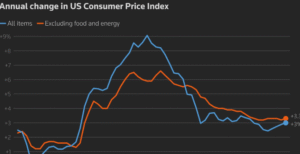$BRNT $RUB $OIL
#Russia #Oil #OPEC #Energy #Markets #BrentCrude #Commodities #Economy #Investing #Geopolitics #OilandGas #Trade
Russia’s oil production in 2025 is expected to see a slight decline compared to 2024 as the country adheres to its commitment under the OPEC+ framework to compensate for previous overproduction. Deputy Prime Minister Alexander Novak stated that Moscow anticipates producing between 515 million and 520 million tons of oil this year, compared to the 516 million tons recorded in 2024. This adjustment aligns with OPEC+ supply management efforts, which aim to stabilize oil prices amid fluctuating global demand and geopolitical uncertainties. While the overall production might see a slight decrease, Novak indicated that Russia’s oil processing levels are expected to rise in 2025, reflecting an increase in refining activities. This contrasts with the broader strategy of curbing total output while ensuring domestic processing capacities remain robust.
The decision to slightly reduce oil production comes amid a volatile global energy market. Prices for benchmark crude, such as Brent ($BRNT), often react to Russia’s production strategies due to the country’s significant share in global supply. A moderated output from Russia could lend support to global oil prices, particularly as demand from major consumers like China and India fluctuates. Additionally, the geopolitical landscape, including Western sanctions and the ongoing recalibration of trade dynamics, has complicated Russia’s oil export markets. The continuation of deals with countries outside the West, such as China, India, and Turkey, will be crucial in sustaining revenue streams amid constraints imposed by sanctions on energy exports. The ruble ($RUB) has also felt the impact of shifting oil revenues, as fluctuations in oil income directly affect Russia’s trade balance and fiscal stability.
Oil market participants are closely watching Russia’s production adjustments, as they have broader implications for OPEC+ cohesion and global supply levels. Russia’s reduction follows an OPEC+ strategy that seeks to manage global output levels to prevent oversupply and stabilize prices. By compensating for previous overproduction, Russia is signaling its adherence to group-wide agreements, which could strengthen cooperation within the alliance. This also means traders and investors in oil markets will need to assess how these changes align with broader economic conditions, such as global inflation trends and central bank policy responses. If oil prices remain supported due to reduced Russian exports, inflationary pressures could persist in certain economies, potentially influencing central bank interest rate decisions and broader commodity market movements.
Despite the expected dip in oil production, Russia’s increase in processing capacity signals a strategic shift towards refining more crude domestically, rather than exporting unprocessed oil. This move may help mitigate financial risks associated with international market volatility and enable Russia to extract more value from its petroleum resources. The country’s refining sector could see increased efficiency and output, which aligns with trends observed in major energy-producing nations seeking to harness more revenue from the downstream oil supply chain. Analysts will continue monitoring Russia’s adherence to the OPEC+ agreement, refining output, and shifts in oil and currency markets as the year progresses, given that any major production changes could shift global oil prices and impact broader economic trends.










Comments are closed.